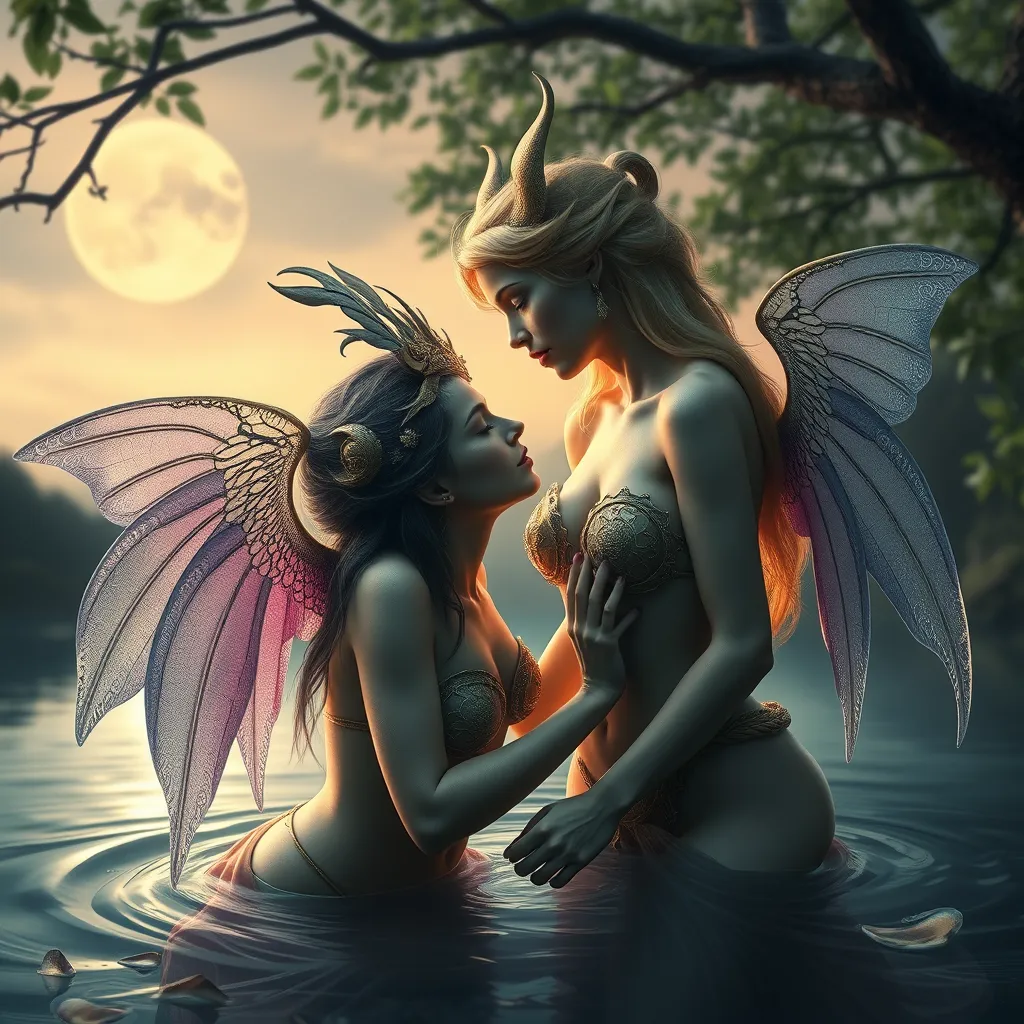The Nymph’s Kiss: Exploring the Enchanting Power of Nymphs in Myth and Legend
I. Introduction
Nymphs are fascinating figures in mythology, often depicted as beautiful, ethereal beings associated with various natural elements. They serve as personifications of the beauty and power of nature, integral to the myths and legends of many cultures.
In different traditions, nymphs play diverse roles, from benevolent guardians of nature to alluring temptresses. This article aims to delve into the significance and symbolism of nymphs, exploring their historical context, types, representation in literature and art, and their enduring legacy in modern culture.
II. Historical Context of Nymphs
The concept of nymphs can be traced back to ancient civilizations, where they were often revered as divine spirits associated with specific natural features. In Greek mythology, nymphs were considered lesser deities, serving the gods and embodying the beauty of the natural world.
In Greek mythology, different types of nymphs were identified, each with distinct characteristics and domains. For example, Naiads were water nymphs, while Dryads were associated with trees. The rich tapestry of nymph mythology can also be found in Roman, Celtic, and Slavic traditions, where similar figures appeared, such as the Roman Nymphs and Celtic Sidhe.
A. Origins of nymph mythology in ancient civilizations
Nymphs originated in the oral traditions of ancient peoples, evolving through storytelling and cultural exchange. They often represented the unexplainable forces of nature, embodying both beauty and danger.
B. Nymphs in Greek mythology: types and characteristics
- Naiads: Water nymphs associated with springs, rivers, and lakes.
- Dryads: Tree nymphs linked to oak trees, believed to be the spirits of the trees themselves.
- Oreads: Mountain nymphs who inhabited rocky terrains and were often depicted as protectors of the mountains.
C. Comparison with nymph-like figures in other cultures
Similar to nymphs, various cultures have their own nature spirits:
- Roman: Nymphs were often associated with the goddess Diana, representing the natural world.
- Celtic: The Sidhe were magical beings, linked to the earth and known for their enchanting beauty.
- Slavic: Rusalka, water spirits that were often depicted as beautiful young women who could lure men to their demise.
III. Types of Nymphs and Their Domains
Nymphs can be classified into various types based on their affinity with elements of nature. Each type holds a unique significance and connection to the environment they represent.
A. Naiads: Water nymphs and their associations
Naiads are enchanting water nymphs, believed to inhabit rivers, streams, and springs. They were often depicted as guardians of fresh water, essential for life and fertility.
B. Dryads: Tree nymphs and the spirit of the forest
Dryads are closely tied to trees, particularly oaks. Their existence was believed to be interconnected with the trees they inhabited; if the tree died, so did the Dryad.
C. Oreads: Mountain nymphs and their connection to nature
Oreads were the mountain nymphs who resided in the heights, symbolizing strength and the unyielding beauty of nature. They were often portrayed as wild and free, embodying the spirit of the mountains.
D. Other nymph classifications and their significance
Other types of nymphs include:
- Oceanids: Sea nymphs associated with the ocean.
- Nereids: Daughters of the sea god Nereus, often depicted as helpful to sailors.
IV. The Nymph’s Kiss: Symbolism and Interpretation
The “Nymph’s Kiss” serves as a powerful metaphor in literature and art, representing both allure and danger.
A. The kiss as a metaphor for enchantment and allure
Nymphs are often portrayed as enchanting beings who can mesmerize mortals with their beauty and charm, symbolizing the allure of nature itself.
B. Nymphs as symbols of nature’s beauty and fragility
Their existence reflects the delicate balance of nature, embodying both its breathtaking beauty and its vulnerability. Nymphs remind us of the necessity to protect the natural world.
C. The duality of the nymph’s kiss: both blessing and curse
While the kiss may signify enchantment, it can also lead to peril. Nymphs can be capricious, and their affection may result in misfortune for those who take their allure lightly.
V. Nymphs in Literature and Art
Nymphs have been depicted in various forms of literature and art throughout history, capturing the imaginations of writers and artists alike.
A. Representation of nymphs in classical literature
In classical texts such as Homer’s “The Iliad” and Ovid’s “Metamorphoses,” nymphs play vital roles, often as muses or embodiments of nature’s beauty.
B. The portrayal of nymphs in Renaissance art and poetry
During the Renaissance, nymphs became popular subjects in art, symbolizing beauty, love, and the natural world, as seen in works by artists like Botticelli.
C. Modern interpretations and adaptations in contemporary literature and media
Today, nymphs are often reinterpreted in fantasy novels, films, and television series, continuing to intrigue audiences with their enchanting narratives.
VI. The Cultural Impact of Nymphs
Nymphs have transcended their mythological origins, influencing folklore, modern storytelling, and psychological archetypes.
A. Nymphs in folklore and fairy tales
Nymph-like figures often appear in folklore and fairy tales, representing the mystical and magical aspects of nature.
B. Influence of nymph mythology on modern storytelling
The archetype of the nymph has influenced countless stories, from fairy tales to modern fantasy, often symbolizing the interplay between humanity and nature.
C. Nymphs as archetypes in psychology and symbolism
In psychological terms, nymphs represent the feminine aspect of nature, embodying beauty, allure, and the unconscious forces that influence human behavior.
VII. The Enduring Legacy of Nymphs
The legacy of nymphs continues to thrive in popular culture, reflecting their timeless appeal and relevance.
A. Nymphs in popular culture: film, music, and fashion
From films like “The Shape of Water” to music inspired by nature, nymphs have become symbols of beauty and mystery in contemporary art.
B. Revival of interest in nymph mythology in the 21st century
With a growing interest in environmentalism, nymph mythology has seen a revival, emphasizing the connection between humanity and the natural world.
C. The role of nymphs in environmentalism and nature conservation
Nymphs are often used as symbols in campaigns for nature conservation, representing the beauty and fragility of the ecosystems we strive to protect.
VIII. Conclusion
The enchanting power of nymphs continues to captivate modern audiences, symbolizing the beauty and complexity of nature. Their roles in mythology highlight the delicate balance between humanity and the natural world, urging us to recognize our connection to it.
As we reflect on the significance of nymphs, we invite readers to explore their own relationships with nature and consider how these mystical beings can inspire a deeper appreciation for the world around us.



